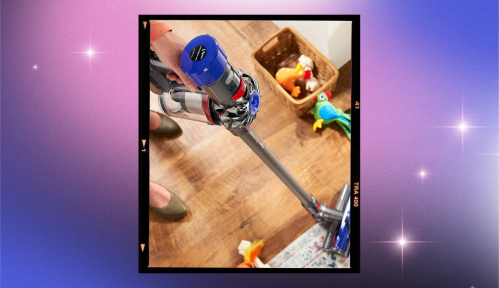Our editors independently select these products. Making a purchase through our links may earn Well+Good a commission
This being 2020, many people have graduated from using wearables for simple step counting to getting more in-depth info about their overall well-being. Want to know how much time you spent in REM sleep last night? Track your menstruation cycle? Clock your heart rate? It’s all information that’s literally now available at your fingertips—and why wellness wearables are one of Well+Good’s 2020 Wellness Trends.
According to a new study published in The Lancet, there’s another potential way wearables can help keep their users healthy: detecting the earliest signs of illness. Researchers looked at de-identified data—specifically, resting heart rate data, minutes of sleep, and wear time—from over 47,000 consistent Fitbit users in five states. They created a model that determined that someone likely had an influenza-like illness (ILI) if their sleep time and resting heart rates were both elevated past a certain threshold.
Researchers then cross-referenced the Fitbit data with weekly ILI info gathered by the Centers for Disease Control and Prevention (CDC) and found that predicting outbreaks of ILI generally became more accurate when they used the Fitbit data. “Week-to-week changes in the proportion of Fitbit users with abnormal data were associated with week-to-week changes in ILI rates in most cases,” the study authors wrote.
This could have big implications for public health efforts in the future. “By accessing these data, it could be possible to improve real-time and geographically refined influenza surveillance. This information could be vital to enact timely outbreak response measures to prevent further transmission of influenza cases during outbreaks,” the study authors conclude.
“We think we can tell when people are getting sick, just from their elevated heart rate.” —Michael Snyder, PhD
On a more micro scale, some experts believe that people could soon use their own wearable data to tell if they’re coming down with a cold or a flu. “We think we can tell when people are getting sick, just from their elevated heart rate,” says Michael Snyder, PhD, the director of the Center for Genomics and Personalized Medicine at Stanford University says.
Dr. Snyder has been studying the possible correlation between wearable technology and illness prediction Stanford for years; a study he and his team published in 2017 found that certain wearable devices were potentially accurate enough to predict early signs of Lyme disease and inflammatory responses. Another team at Stanford found in a study published in 2019 that the Apple Watch’s Heart App was about 84 percent accurate in detecting atrial fibrillation (irregular heartbeats that could lead to more serious health conditions).
Will Ahmed, the founder and CEO of Whoop (a heart rate monitor worn focusing on fitness output and recovery) has noticed that his customers are already using their devices to try and track their immunity, which they’ve shared on social media. “A sign that you may be getting sick on Whoop is when you actually get really good quality sleep, but your heart rate variability [the time between each heartbeat] and your resting heart rate are dramatically off,” Ahmed says, explaining that this indicates that your body is resting, but not recovering. “So on Whoop, you have a high level of sleep but not a high level of recovery, in fact you’ll see a low recovery.”
The research on this, of course, is still emerging. While scientists have seen a connection between heart rate variability [HRV] and inflammation and use HRV to see if the body is under stress, using it to detect common illnesses is still new and needs to be studied more. But his line of thinking is exactly what researchers behind the Fitbit study found, showing this is definitely a correlation that deserves more attention.
‘[Wearable data is] a valid tool that can help predict the likelihood of illness. But it should not be used in place of a doctor who can diagnose illness.” —Akil Palanisamy, MD
Plus, while clues such as a change in heart rate or a low recovery can be a helpful hint to slow down and show your immune system some extra love, Harvard-trained integrative medicine doctor and authorAkil Palanisamy, MD says your wearable data should not be treated as a substitute for a doctor’s visit.
“Wearables can provide additional data on factors such as heart rate and sleep that offer useful clinical information. It is a valid tool that can help predict the likelihood of illness,” Dr. Palanisamy says. “But it should not be used in place of a doctor who can diagnose illness [especially] if a patient has any ‘red flag’ symptoms like chest pain, trouble breathing, or abdominal pain.” Anything you would book a doctor’s appointment for, you should still do so. You can still bring up any personal health changes a wearable has indicated, but tech is no replacement for a actual MD.
When it comes to your personal health, the more information you have about your body the better, and wearables are getting smarter and smarter. Just make sure you don’t confuse data with a diagnosis. Your fitness tracker isn’t smarter than your doctor—at least not yet.
If you aren’t sure how to track your heart rate using a wearable, here are some tips. Plus, how to use a fitness tracker to make your workouts more effective.
Sign Up for Our Daily Newsletter
Get all the latest in wellness, trends, food, fitness, beauty, and more delivered right to your inbox.
Got it, you've been added to our email list.











